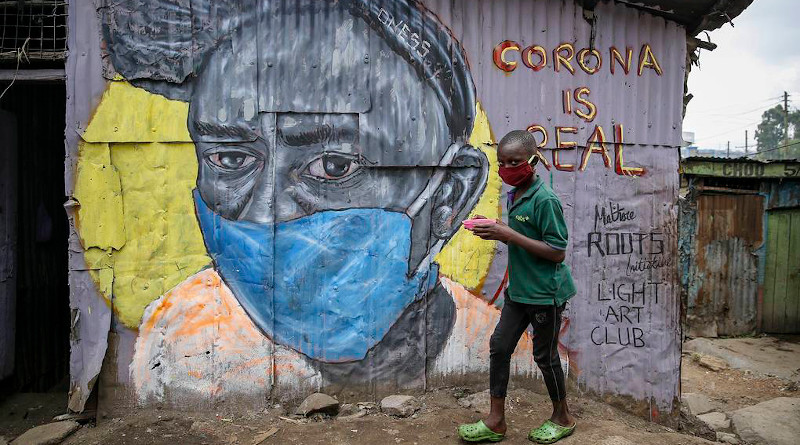Morgue Data Reveal Africa’s High COVID-19 Death Toll
Since the start of the pandemic, Africa has reported more than 12 million COVID-19 cases and nearly 260,000 deaths—totals that seem vast, but pale in comparison to reported cases and deaths among countries in North America, Europe, and Asia. By contrast, the United States has amassed almost 100 million cases and nearly 1.08 million recorded COVID-19 deaths to date, including as many as 5,000 deaths in a single day during the winter 2021 surge.
Africa’s low death count has baffled health experts and government officials, but growing data contrasts previous, widespread assertions over the last three years that COVID-19 spared the continent.
A new study led by Boston University School of Public Health (BUSPH) researchers suggests that the reported COVID-19 death toll in Africa is substantially higher than official records indicate.
Published in the journal BMJ Open, the study found that nearly 90 percent of deceased individuals at a crowded morgue in Lusaka, Zambia were infected with COVID-19 during peak transmission periods between July 2020-June 2021—and only 10 percent of these individuals tested positive for COVID while alive.
Study lead authors Dr. Christopher Gill, professor of global health at BUSPH, and Dr. Lawrence Mwananyanda, adjunct research assistant professor of global health at BUSPH, are confident that the majority of these deceased people died from COVID-19, rather than from other causes.
“It is always challenging to know whether someone died with COVID or died from COVID,” says Dr. Gill, who has studied a wide range of infectious diseases, particularly pediatric illnesses, and vaccines in the US and abroad. “What we can say is that a majority of the deceased presented with some constellation of respiratory symptoms on top of the positive PCR test.”
Furthermore, he says, the research team performed lung biopsies on a subset of the decedents, and found evidence of lung pathology consistent with COVID disease. “This does not completely eliminate the possibility that some of the deaths could have been misclassified as COVID deaths when, in fact, the virus was a coincidental finding—but overall, the evidence supports COVID as the cause of death in most cases.”
The findings build upon the researchers’ previous postmortem surveillance of COVID-19 at the same morgue in Lusaka—but among a much smaller group of people and within a shorter time period—published in The BMJ in February 2021. The study found that 15-19 percent of 70 decedents tested positive for the virus between June-October 2020, with the majority of deaths occurring outside of hospitals and in communities where COVID-19 testing was sparse, if not nonexistent.
The new results represent 1,118 decedents among three waves of the pandemic, stemming from the more contagious Beta and Delta variants and peaking in July 2020, January 2021, and June 2021. Similar to the previous findings, Dr. Gill and Dr. Mwananyanda found that the majority of deaths occurred outside of medical facilities, and in impoverished communities. Across the study time period, 32 percent of the deceased individuals tested positive for COVID-19, but that percentage rose to 89.3 percent during the peak times, and 4 out of 5 COVID-19 deaths occurred in the community instead of at a hospital.
“This is an example of what it means to be a resource-poor country,” Dr. Gill says. “We tend to think of this just in terms of poor health and a high incidence of infectious diseases, but it also reflects the ability of poorer countries to map the impact of such diseases on its populations. Rather than an ‘African paradox,’ the far simpler explanation is that COVID-19 has affected African countries just as the virus has everywhere else, but has gone undocumented.”
Earlier in the pandemic, “there was often an assumption that COVID-19 deaths would be obvious and easy to find,” Dr. Gill says. But that assumption has been disproven over the past two years, he says, pointing to excess mortality statistics in New York City, as one example, in which excess COVID-19 deaths have far surpassed reported case that were diagnosed while people were living.
“That ‘excess mortality’ tells us that it is not so easy to link a viral infection to a death, even in the midst of a pandemic, and even when the suspicion of COVID-19 should be high,” he says. “It is simply a reflection that our capacity for postmortem surveillance is rarely complete. If we take that lesson from NYC to Lusaka—a city that is extremely poor and has very few resources for surveillance—it is easy to see how COVID-19 deaths could be undercounted. This is one example of what it means to be a resource-poor country.”
The reasons for these higher death counts are still unclear. Many surmise that Africa’s younger population or greater exposure to COVID-19 or other diseases, such as malaria, may produce greater immunity to severe cases and deaths—with some officials stating that a high number of deaths would not go unnoticed in local communities.
Dr. Gill hopes that this study increases awareness among health experts, government officials, and the general public, of the true toll of the pandemic in Lusaka, and likely throughout Africa. Wider access to rapid tests and vaccines remains essential, he says.
“I would love to believe that we have seen the worst of COVID-19 at this point, but this disease has surprised us in the past,” Dr. Gill says. “It is better to be prudent and take this opportunity to vaccinate as much of the population as we can, particularly now, when the healthcare systems are not under as much acute stress as they were in the worst days of 2021.”

